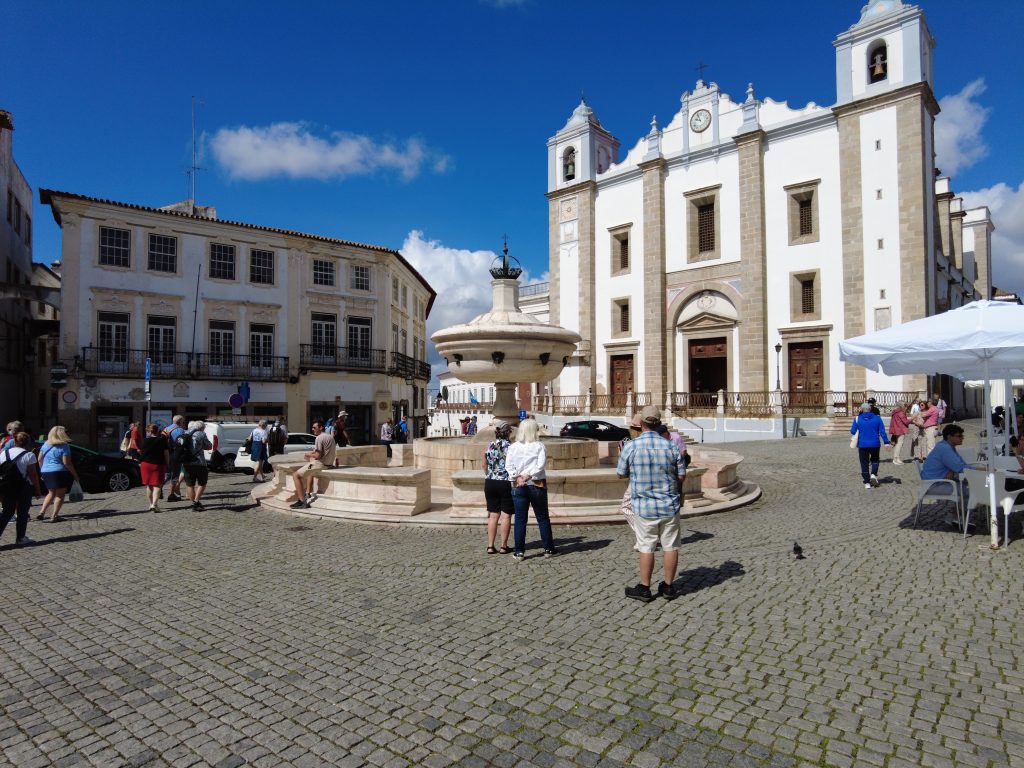Nestled in the heart of Portugal’s Alentejo region, Évora is a UNESCO World Heritage city that captivates visitors with its rich history, stunning architecture, and charming streets. From its ancient origins to its unique landmarks, Évora is a must-visit destination for anyone looking to explore the essence of Portugal. Let’s take a journey through this historic gem!
Évora’s story begins thousands of years ago, with its surroundings inhabited as early as 4000 B.C. The city itself was founded by the Eburones, a Celtic tribe, in the 8th century. Over the centuries, Romans, Visigoths, and Moors left their mark on Évora, each contributing to the city’s unique character. The Reconquista in 1165 brought Évora back under Portuguese rule, ushering in a golden era of growth and architectural splendor.

The Roman Temple: A Window to Antiquity
The Roman temple in Évora, often misidentified as the Temple of Diana, dates back to the 1st century AD. Located in the former Roman forum, Liberalitas Iulia, it might have honored Emperor Augustus. This structure, known for its Corinthian columns, has survived through various historical uses, making it a prominent Roman relic in Portugal.

The Chapel of Bones: A Sobering Reflection
The Chapel of Bones (“Capela dos Ossos”) is perhaps Évora’s most famous and chilling attraction. Built in the 17th century by Franciscan monks, the chapel’s walls are adorned with the bones of over 5,000 people. Its haunting inscription, “Nós ossos que aqui estamos, pelos vossos esperamos” (“We bones that are here, await yours”), serves as a poignant reminder of the fragility of life. While eerie, the Chapel of Bones is a profound and thought-provoking site that leaves a lasting impression.

Praça do Giraldo: The Heart of the City
Praça do Giraldo, Évora’s main square, is the bustling heart of the city. Once a Moorish marketplace, this historic square is now a hub of local life, surrounded by stunning buildings like the Igreja de Santo Antão and a white marble fountain. Grab a coffee at one of the outdoor terraces and take in the vibrant atmosphere as you watch daily life unfold in this iconic location.

The Star of the Show: Évora’s Streets and Architecture
While Évora’s landmarks are undeniably impressive, the true magic of the city lies in its labyrinth of narrow streets and architectural details. Wander through cobblestone alleys lined with whitewashed houses, traditional azulejos (ceramic tiles), and wrought-iron balconies. Each turn reveals a new perspective, from hidden courtyards to charming doorways and vibrant street art.
The city’s medieval walls, built in the 14th century, enclose these picturesque streets, preserving their timeless beauty. Walking through Évora feels like stepping back in time, offering visitors a chance to immerse themselves in the city’s rich cultural heritage.

Architectural Highlights
Évora’s architectural tapestry is a blend of styles, reflecting its diverse history:
- Medieval Gothic: The Cathedral of Évora is a masterpiece of Gothic architecture, with a stunning rooftop that offers panoramic views of the Alentejo plains.
- Renaissance: Explore the University of Évora, housed in a 16th-century building with beautifully preserved cloisters.
- Baroque: Churches like Igreja de São Francisco showcase intricate Baroque details that add to the city’s charm.
Why Évora Stands Out
Whether you’re exploring the Roman Temple, marveling at the Chapel of Bones, or simply getting lost in the charming streets, Évora promises a journey through time and culture. Don’t forget to bring your camera and your curiosity—every corner of this city has a story to tell.
Make sure to include Évora in your next adventure through Portugal and discover why this historic gem continues to captivate travelers from around the world.
#Useful_Tips #Portugal_Unplugged



